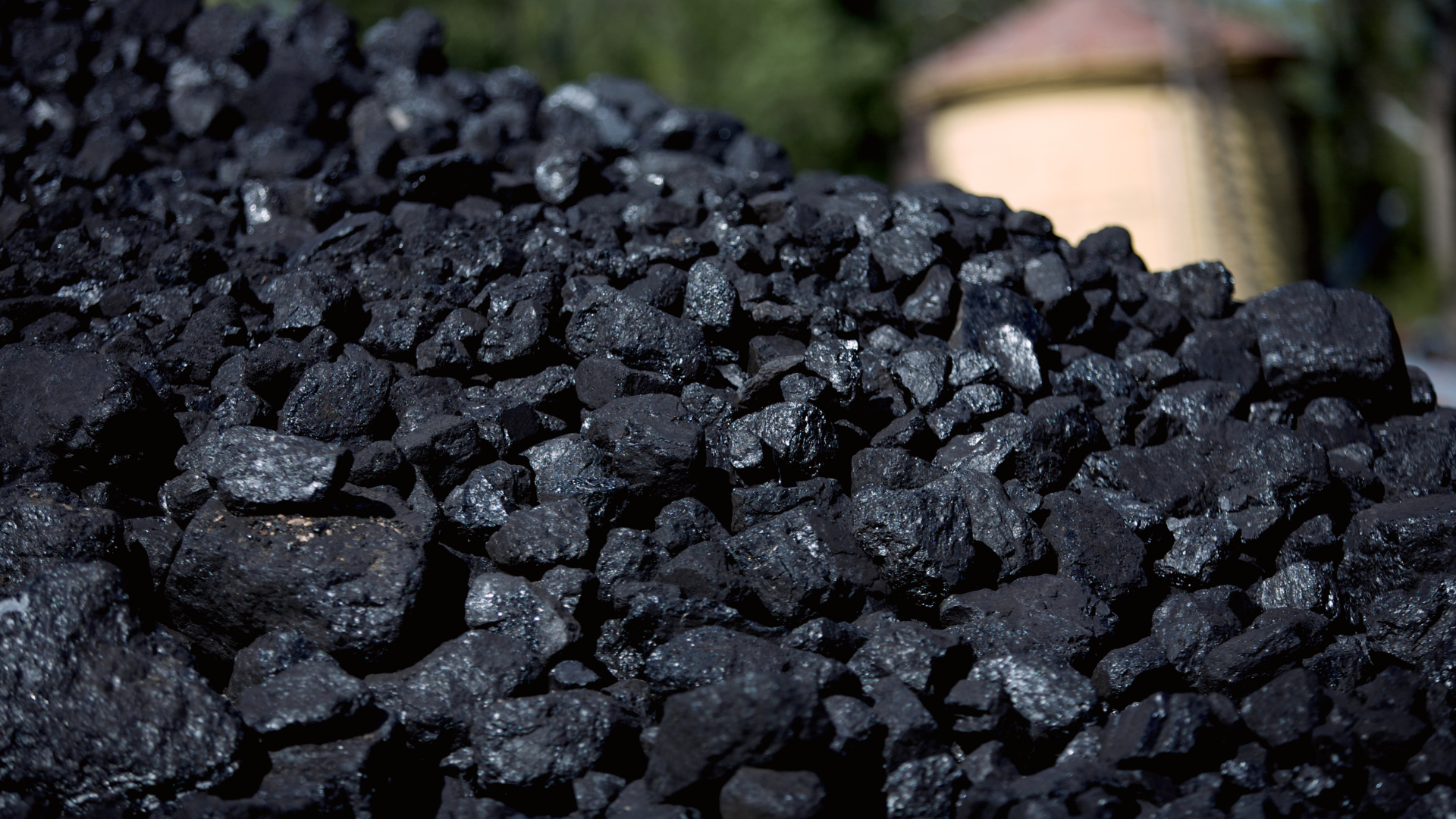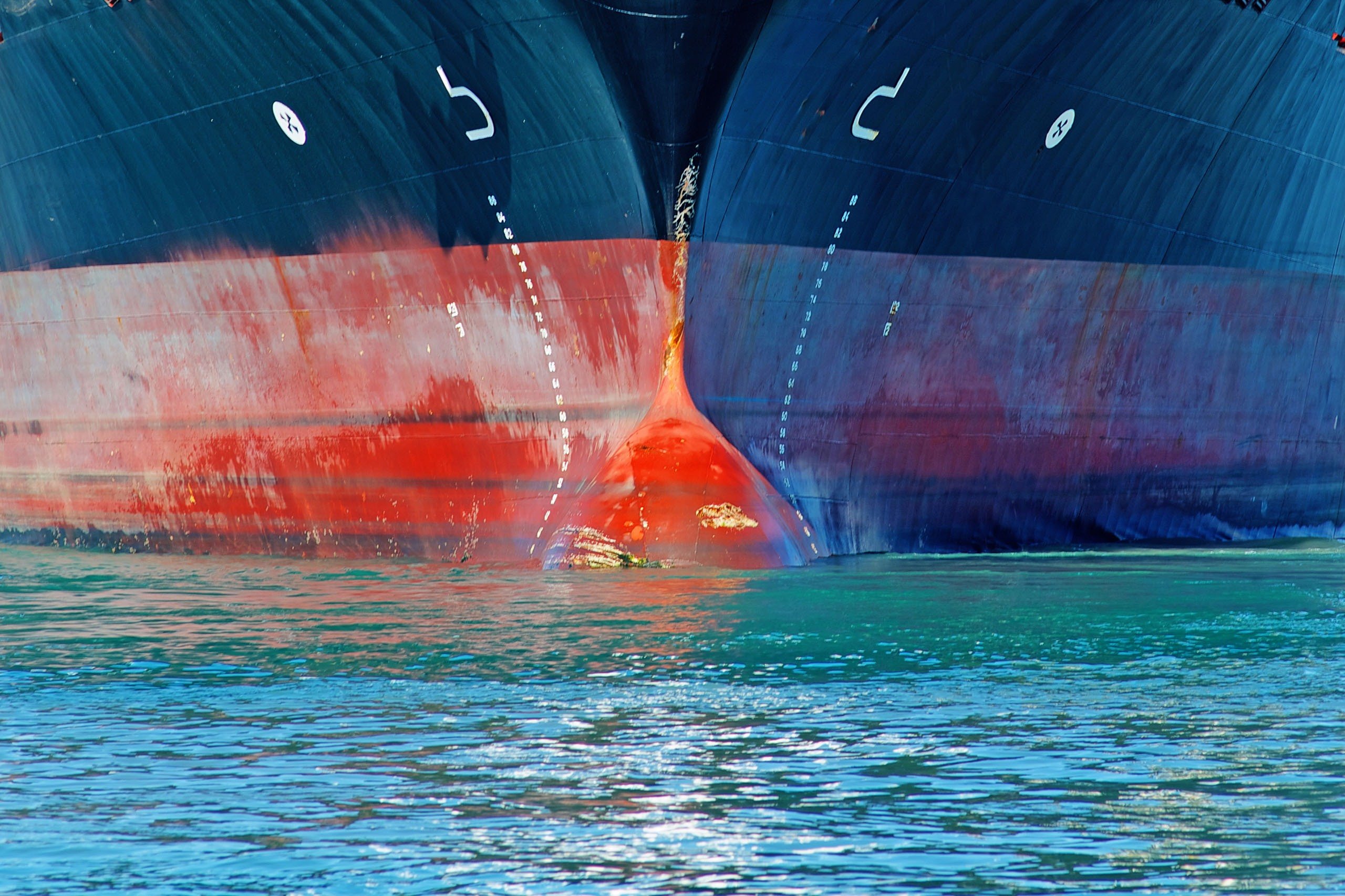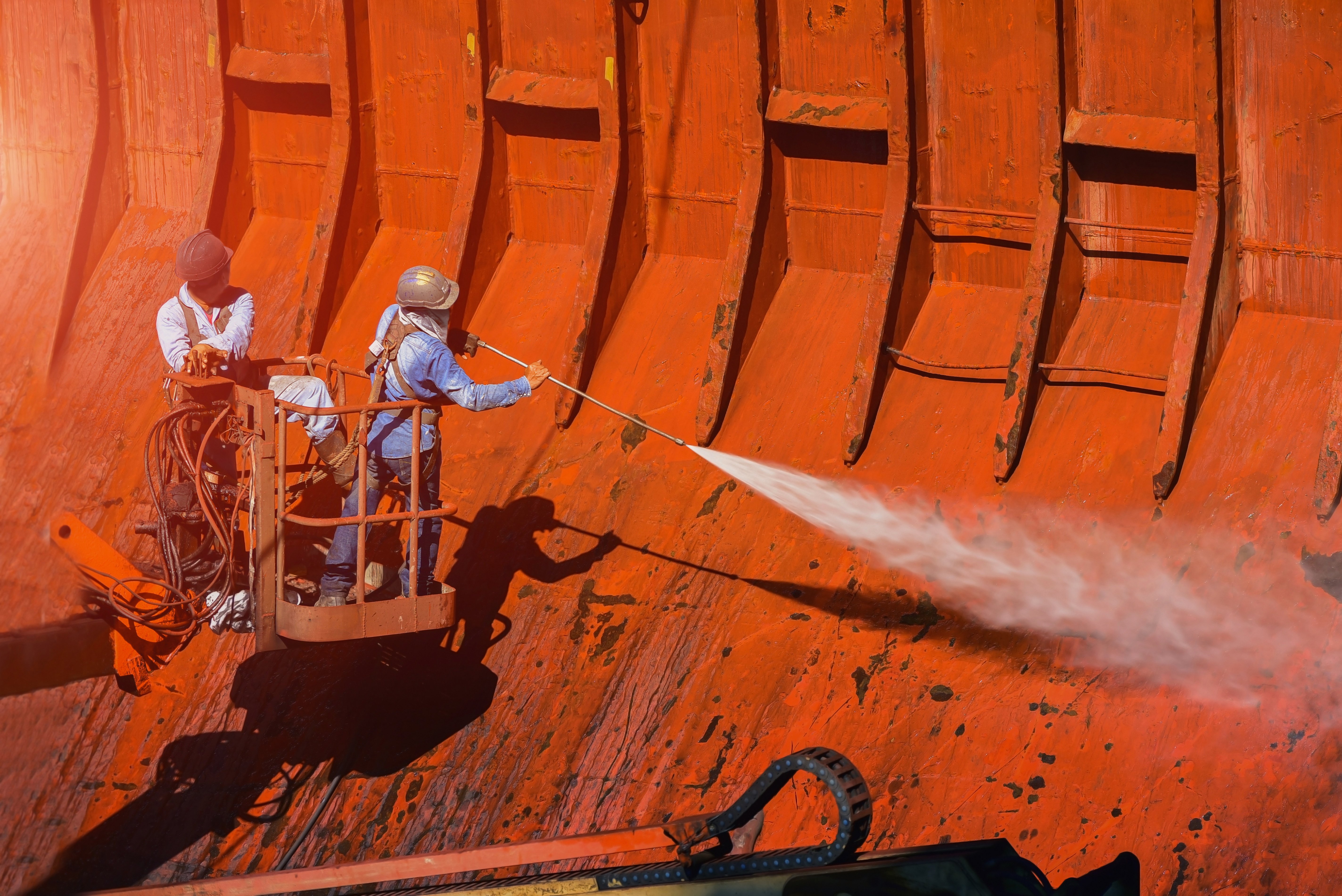
本記事では石油コークスの物理的特性や海上排出による環境への影響、石油コークス洗浄剤の特性と効果、およびその処分に関する国内外の規制について説明しています。
An ITOPF advisory note
First published: November 2012 / Updated: May 2021
INTRODUCTION
Petroleum coke (’petcoke’) is a bulk by-product of oil refining. Most petcoke (approximately 75%) is sold as a fuel for power generation and cement production, but the higher quality petcoke is sold for the calcining industry. It is commonly transported at sea in bulk carriers. As with most other bulk cargoes, after discharge there remain residues in the holds and on deck which must be cleaned before new cargoes can be loaded. The cleaning process typically entails dry sweeping, high pressure water washing, the application of a chemical cleaner and a final high pressure water wash. In theory, the dirty wash water is either disposed of at sea or discharged for treatment in land-based reception facilities. However, given increasingly stringent national and international legislation e.g. MARPOL, it is becoming ever more important to ensure that a proper disposal route is followed. It is also possible for vessels carrying petcoke to be involved in an incident which results in a loss of the cargo at sea. The purpose of this bulletin is to briefly describe the physical properties of petcoke, the environmental implications of its discharge or loss at sea, the properties and effects of petcoke cleaning agents and some of the national and international policies relating to its disposal.
PHYSICAL PROPERTIES
Petcoke, also known as green delayed coke, consists mainly of carbon (84-97%) and is produced during the thermal decomposition of oil in refining. It exists in various forms, including needle coke, sponge coke, and shot coke (Figure 1), which have different microstructures and differ in sulfur content and impurity levels. Crude oil quality is key for determining which of these types is produced – cokes produced from feedstocks high in asphaltenes contain higher concentrations of sulfur and metals1.
Figure 1. Some of the petcoke types. A. Needle petcoke; B. Sponge petcoke; C. Shot petcoke. Source (Edwards, 2015)2.
Green petcoke is the product of delayed coking and contains significant hydrocarbon content (Table 1). It has a distinctive hydrocarbon smell and, depending on the heating rate of the refining process, can contain from 4 to 21% of volatile material, which consists mainly in residual hydrocarbons, including polycyclic aromatic hydrocarbons (PAHs).
Table 1. Representative range values for properties of petcoke2,3
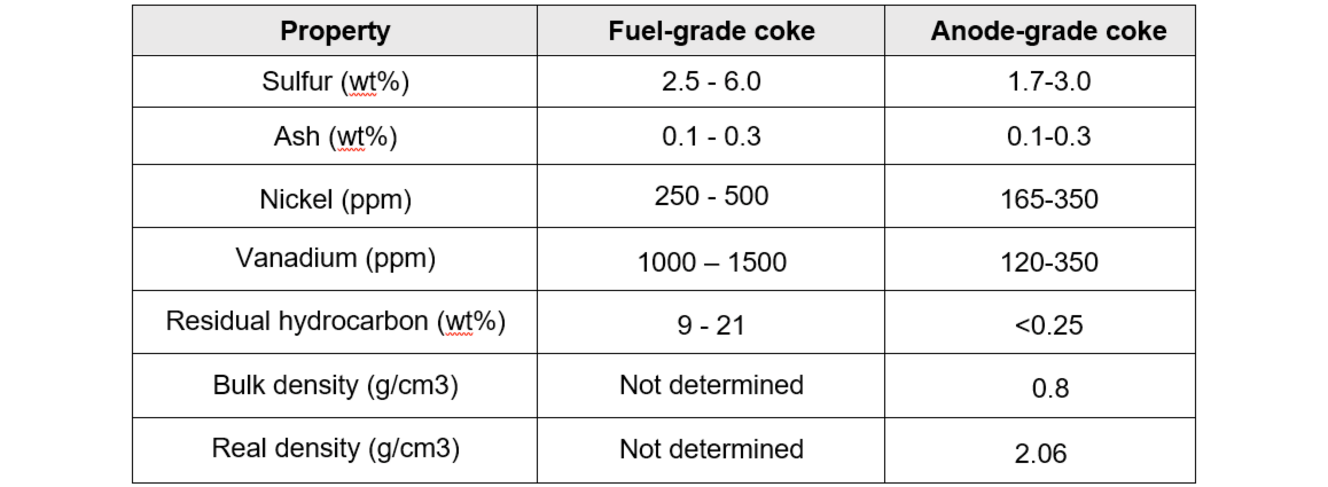
Calcined petroleum coke is derived from green coke by heating to high temperatures (> 1,200°C). This process removes virtually all of the hydrocarbon content (i.e. to < 0.1%). It is common to use a fine water spray containing surfactants to suppress dust. The surfactant reduces the surface tension of the water, thus making it more effective at wetting the cargo and reducing the volume of water necessary. It is commonly applied in a dilute (between 100:1 and 3,000:1) form and normally classed as nonhazardous.
The exact properties of petcoke depend on the source of the crude oil feedstock and the heating process used. However, major components would be expected to be within the ranges illustrated in Table 1. Trace metals such as nickel and vanadium may be present at ppm levels. The specific gravity of petcoke ranges from 0.8-2.1 relative to water. Therefore, the product specification for each cargo must be consulted to determine if it will float or sink. As a rule of thumb, most petcoke products will sink in seawater. Petcoke is stable and insoluble in water and is therefore likely to form a slurry if discharged at sea.
ENVIRONMENTAL EFFECTS OF PETROLEUM COKE
Environmental toxicity studies have shown that, in general, petcoke has a low potential to cause adverse effects on both aquatic and terrestrial endpoints in plants and animals. Consequently, petcoke Material Safety Data Sheets (MSDS), the EU CLP regulation, and the GESAMP/EHS composite list of hazard profiles 2015 all state that petcoke is not considered a hazard to the marine environment. No updates have been added in relation to petcoke in the latest versions of the IMSBC (2020) and MARPOL Annex V, indicating that the substance is considered non-hazardous as of 2021. However, recent evidence suggests that petcoke is not as inert as initially thought, with environmentally relevant substances (nickel and vanadium) being detected in petcoke water leachates; these might impact the growth of algae4 when discharged overboard in low-dilution environments.
It is worth noting that, although petroleum coke is described as nonhazardous, there are potential human health effects relating to the small particulate matter within the powder or granules as inhaled (i.e. airborne) dust.
As previously mentioned, the hydrocarbon content of green or raw coke is likely to form a sheen on the water’s surface, although this is likely to be localised and non-persistent. The greatest concern following a bulk release of petroleum coke (e.g. in a ship casualty scenario) is the potential for smothering effects, particularly in low energy or shallow waters where spreading and dilution is reduced. A release near the shoreline may also cause a negative visual effect if significant black solids are washed onto the shore. Any increases in pH or sheen will be short lived, given sufficient water depth and water exchange. As far as the discharge of small quantities of petcoke within otherwise clean wash waters is concerned, it is not expected that there would be harmful effects to the marine environment as long as the hydrocarbon content of the cargo is sufficiently low. However, this comment should be read in the context of the governing legislation referred to below.
CLEANING PRODUCTS
The high content of oil in green coke poses difficult cleaning problems during the hold washing process, which typically also involves the use of chemical cleaning agents. A number of specialist cleaning products are available for this purpose. These may be general cleaning agents or marketed specifically for particular cargo residues. Some may contain hydrocarbon solvents, while others cleanse on the basis of their caustic properties. As such, they too must be considered when studying the environmental implications of wash water disposal, particularly at sea.
All cleaning products evaluated by the working group on the Evaluation of Safety and Pollution Hazards of chemicals (ESPH) and which were found by the Marine Environment Protection Committee to meet the requirements for potential discharge are listed in Annex 10 of the MEPC.2 circular.
Thus, because of their potential dilution in use and propensity to dissolve in the sea, the key to understanding the potential for environmental impact of any such cleaning agents is the concentration profile over time following the loss or discharge at sea. In other words, the quantity involved, the spill rate and the potential for water exchange.
NATIONAL AND INTERNATIONAL GUIDANCE AND RESTRICTIONS ON DISCHARGE
It is beyond the scope of this note to outline the national and international rules on cargo-related discharges, in particular for petcoke. However, a brief note on the rules in the UK and US, as well as those promulgated through the IMO, may be useful for understanding the issues at hand.
Table 2. Summary of MARPOL discharge provisions for petcoke wash water (modified to include oily mixtures)
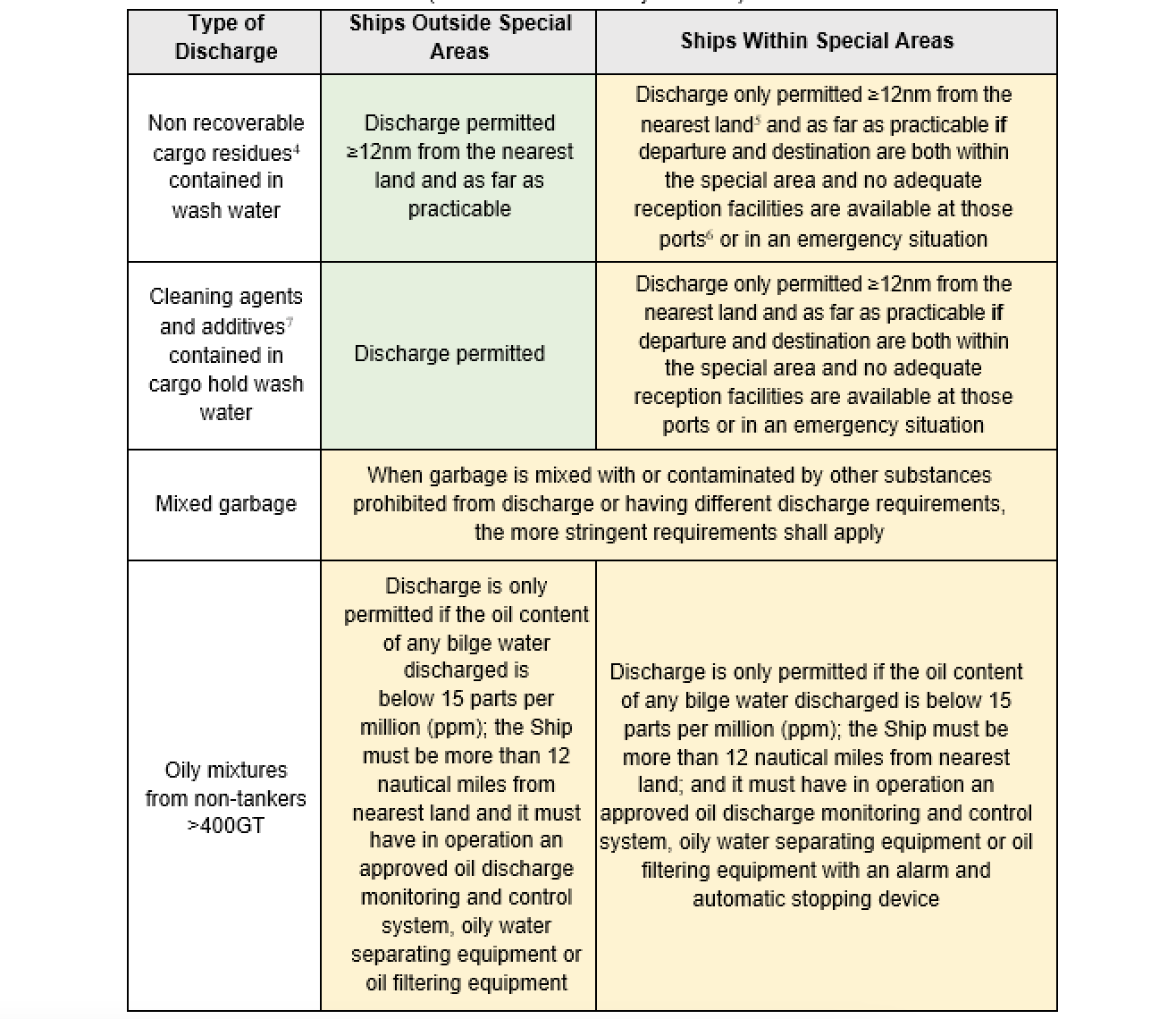
Further, any hydrocarbon “sheen” produced by discharged tank wash water would constitute a violation under MARPOL Annex 1 (concerning oil pollution). Discharge from bilge tanks in areas where permitted must pass through an oily water separator and monitoring system, plus the oil content of the discharge must not exceed 15ppm.
Legislation in the United States, such as the Clean Water Act (CWA), the Act to Prevent Pollution from Ships (APPS) and several Coast Guard regulations, implement the standards imposed by MARPOL and prohibit discharge of oily residues or MARPOL defined garbage within 12 nautical miles from shore. On the other hand, in its guidance on the at-sea disposal of cargo tank washings and hatch washings, the UK Maritime and Coastguard Agency (MCA) states that:
“.... after unloading some bulk cargoes many ships will wash their holds or decks to remove this excess or spilt material as it could contaminate the next cargo. In such cases this material can be disposed of at sea so long as it is inert, has been minimised by removing as much cargo residue as possible and any disposal complies with the 2008 Regulations and any other relevant legislation. If the material is a marine pollutant, a hazardous or noxious material, or a material that could cause secondary pollution on contact with the sea (such as petcoke, which if disposed of at sea, can cause a sheen on the surface, which will put the ship in contravention of Annex 1 of MARPOL 73/78), then any washings should be disposed of on shore through appropriate reception facilities.”
CONCLUSIONS
Although petcoke is not officially classed as harmful to the marine environment and it could in theory be discharged while a vessel is en route and at least 12 nautical miles from the nearest land, petcoke cargo residue and wash water can contain a number of harmful components such as residual hydrocarbons, heavy metals, cleaning agents or dust suppressants. The presence of such components in sufficient quantity could therefore result in a particular cargo residue being considered as harmful to the marine environment.
Generally, the impacts of a discharge of petcoke residue and cleaning products within hold wash water will depend on the volume and the location of the discharge. However, the most likely impact is that an oily sheen may be visible on the water surface for a short time in the immediate vicinity of the discharge, with a localised and short-term increase in the pH of the seawater. If the discharge is undertaken in sufficient depth of seawater with currents allowing a good water exchange, it is likely that any residues will quickly dissipate and that no environmental effects will be observed.
Finally, it is worth noting that the legislation regarding the discharge of any hold wash water from vessels is complicated, whether nationally or internationally. The minimum requirements worldwide tend to be in line with the MARPOL recommendations (for example as outlined in Table 2) but may be more stringent in certain locations. As a result, operators are finding it ever more prudent to transfer tank wash water to shore side facilities for processing rather than discharge at sea in order to avoid potential environmental issues and possible litigation or fines. This is also true for petcoke wash water.
REFERENCES
1Birghila, Semaghiul; Popovici, I. C. Evaluation of the Physical-Chemical Properties in Petroleum Coke. Adv. Pet. Explor. Dev. 6, 28–31 (2013).
2Edwards, L. The history and future challenges of calcined petroleum coke production and use in aluminium smelting. J. Miner. 67, (2015).
3Lee, J. M.; Baker, J. J.; Murray, D.; Llerena, R.; Rolle, J. G. . Quality analysis of petroleum cokes and coals for export specifications required in use of specialty products and utility fuels. in 214th National Meeting, American Chemical Society, Division of Fuel Chemistry (1997).
4Puttaswamy, N., Turcotte, D. & Liber, K. Variation in toxicity response of Ceriodaphnia dubia to Athabasca oil sands coke leachates. Chemosphere 80, 489–497 (2010).
ITOPF
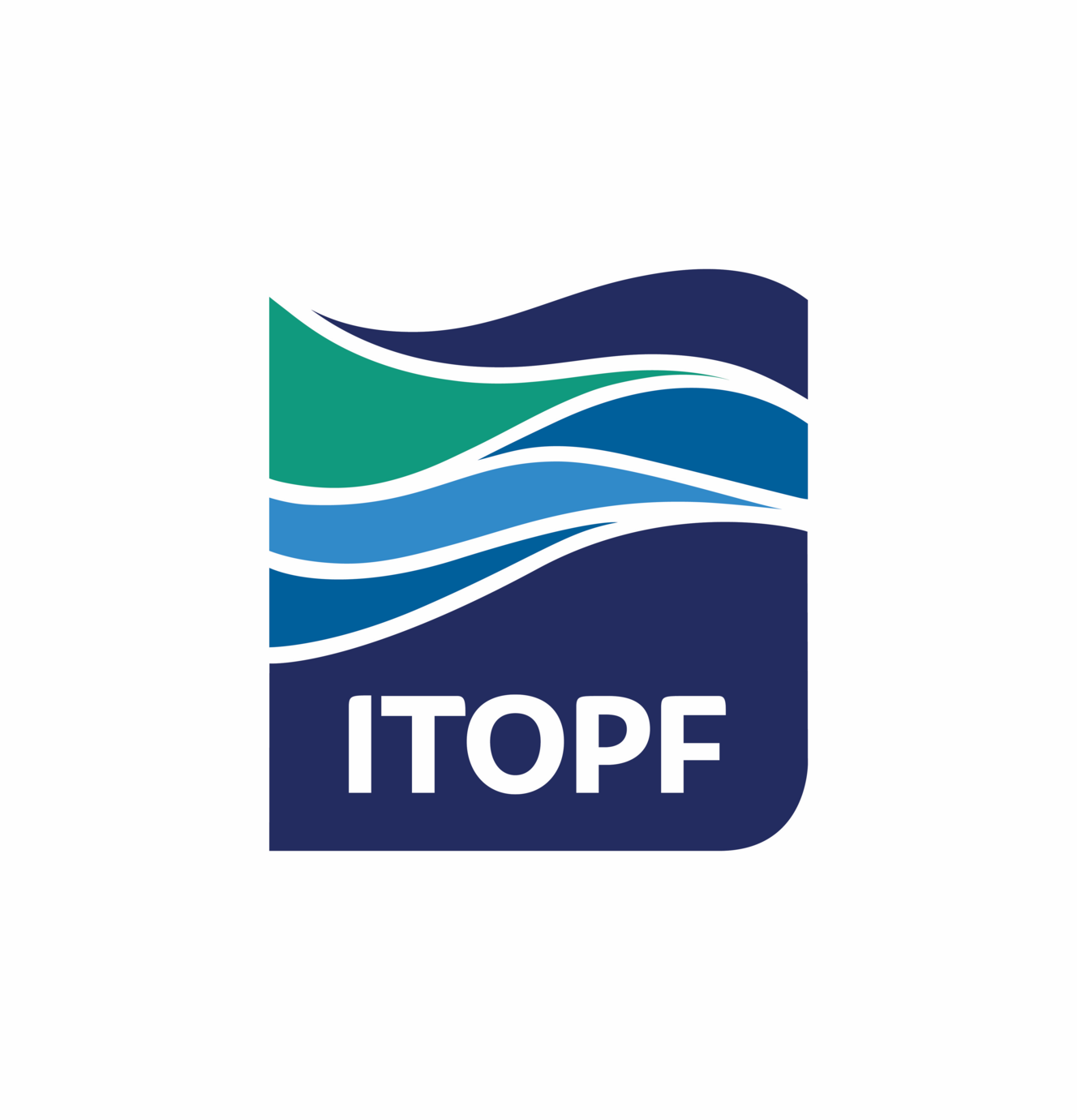
ITOPF is maintained by the world’s shipowners and their insurers on a not-for-profit basis to promote effective response to spills of oil, chemicals and other substances in the marine environment.
Since our establishment in 1968, we have attended on-site at over 800 shipping incidents in 100 countries to provide objective and scientific advice on clean-up measures, the effects of pollutants on the environment and economic activities, and on compensation.
Our first-hand experience of pollution incidents is utilised during contingency planning and other advisory assignments for government and industry. We are an authoritative source of information on marine spills and share our knowledge at training courses and seminars throughout the world, encouraging best practice through outreach and education.
May 2021
e-mail: central@itopf.org
tel: +44 (0)20 7566 6999




